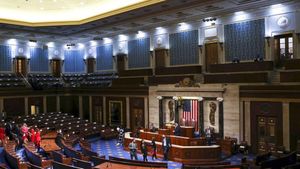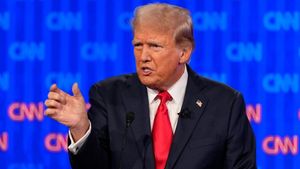Chinese President Xi Jinping arrived in Lima, Peru, on Thursday to inaugurate the newly completed Chancay deep-water port, marking the latest milestone for China’s ambitious Belt and Road Initiative across Latin America. This significant event is part of Xi's broader diplomatic tour of the region, where he is also set to attend the Asia-Pacific Economic Cooperation (APEC) summit and the Group of 20 summit next week.
The Chancay port, located approximately 70 kilometers north of Lima, is being touted as one of China’s most substantial investments on the continent, with $1.3 billion already funneled from Chinese state enterprises. When fully operational, this infrastructure project is expected to attract up to $3.6 billion total investment, thereby enhancing trade connectivity between Asia and Latin America.
During the inauguration ceremony, Xi Jinping emphasized the port's potential to revolutionize trade, stating, "Chancay will dynamize the Asia-Pacific economy." Meanwhile, Peruvian President Dina Boluarte declared the port would serve as a key conduit for South American commodities to reach the Asian markets, thereby assuring food security for China’s vast population.
Scheduled to open shipping lanes to major food export states like Brazil and within Peru itself, Chancay is positioned to handle the transportation of products such as Peruvian fruit directly to China. Mario Ocharan, the Peruvian director of the Chancay Chamber of Commerce, noted, "The first ship is due to set sail during the week of November 18, carrying fresh fruit to Asia," highlighting the rapid operational timeline set for the port.
To facilitate broader access, plans are underway to construct rail links connecting Chancay with Brazilian agricultural hubs. Ocharan hinted at interest from both Korean and Chinese investors to participate in this rail project, reinforcing the cooperative economic relationship between the nations.
Strategically, this inauguration arrives at a time characterized by growing trade tensions between Beijing and Western nations, particularly the United States. This shift highlights China’s increasing influence and operational presence within resource-rich Latin America, presented as part of their strategy against potential tariffs from upcoming U.S. administrations.
Accompanying Xi on this diplomatic mission is a vast delegation of over 100 Chinese business executives, representing firms with major stakes in Peruvian industries, including Cosco Shipping and Chinalco, one of the country's largest mining companies. This presence underlines both the economic and political significance assigned to the Chancay megaport.
On the geopolitical front, concerns surrounding the Chancay port haven’t gone unnoticed, particularly from Washington. General Laura Richardson, who recently held the position of chief of U.S. Southern Command, warned about the potential military applications of the port, raising alarm over Chinese naval interests. These fears reflect broader anxieties as China solidifies itself as the largest trading partner for several Latin American nations, outpacing traditional powers like the U.S.
The Chinese state-controlled Global Times defended the port, referring to it as "a bridge for practical cooperation between China and Latin America," firmly rejecting U.S. accusations of military intentions as unfounded smears.
Chancay is expected to handle shipping from all corners of South America. The port aims to serve as both a logistical hub and a functional outlet for Chinese imports and exports, garnering connections with countries such as Colombia, Ecuador, and Chile. Major shipping lines anticipate utilizing feeder vessels capable of transporting up to 14,000 containers, which could later expand to handle vessels of up to 24,000 TEU (twenty-foot equivalent units).
These developments reflect both the potential for transformative trade routes and the growing stakes, politically and economically, for all players involved. With China’s investments spanning infrastructure, mining, and agriculture across the region, the Chancay port symbolizes more than just another maritime facility—it heralds the dawn of intensified Sino-Latin American cooperation.
The opening of such logistics networks will play a pivotal role not only for Peru but for other Latin American countries eager to participate within this global supply chain. With increasing demand for resources and agricultural products, countries like Brazil see the Chancay port as pivotal for bolstering their export capabilities to Asian markets.
While the inauguration event signifies major advances for Peru's economy, it also places the nation as key player on the geopolitical stage. The balance of power and resources may be challenged as investments and alliances shift along new trade routes, reminding everyone involved of the stakes at play.
The pathway termed "from Chancay to Shanghai" is likely to emerge as the new mantra for proponents of this partnership, embodying the cooperative spirit and ambitious outlook for future economic ventures, raising expectations for what is to come.



